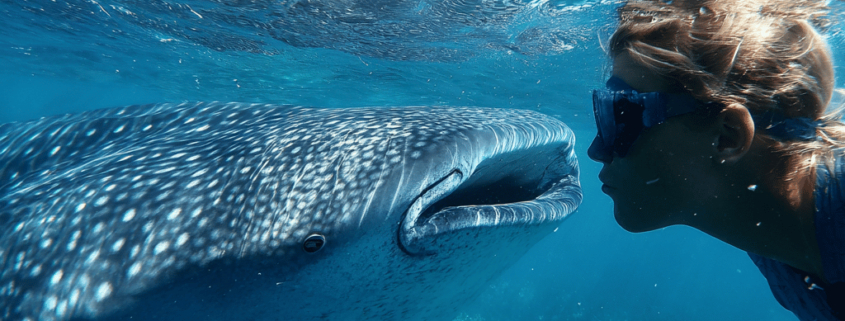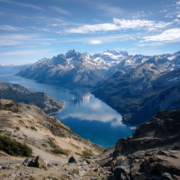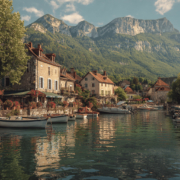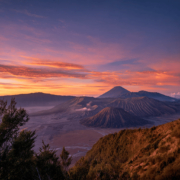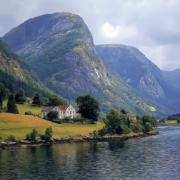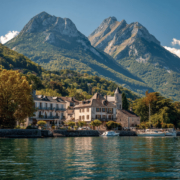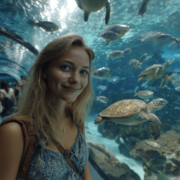Discover Paradise: Why Belize’s Placencia Peninsula Is The Ultimate Hidden Gem You Need to Visit
Nestled on the eastern coast of Central America, Belize presents itself as a hidden gem waiting to be explored. Yet there is something about this particular corner of the world that defies the usual travel brochure descriptions. One finds themselves drawn not merely to its beauty, but to what Joan Didion might have called the “grammar of a place”—the way Belize arranges itself against the Caribbean, the way it holds its secrets close.
The Placencia Peninsula emerges from this landscape as a narrow strip of land that seems almost apologetic in its perfection. Here, pristine beaches meet crystal-clear waters with the kind of clarity that makes one question the reliability of memory—surely beaches this untouched exist only in imagination, yet here they are, tangible and immediate.
But it is perhaps the whale sharks that best embody the peninsula’s particular magic. From March to June, these gentle giants—the largest fish in the ocean—materialize in the waters surrounding Belize like something conjured from myth. The experience of snorkeling with whale sharks off the coast transcends typical adventure tourism; it becomes something closer to communion.
Swimming alongside these magnificent creatures requires a particular surrender—to scale, to the ocean’s indifference, to one’s own smallness. The whale sharks move through the water with the unhurried grace of beings who understand something fundamental about time that humans have forgotten. Watching them, one experiences what Didion described as “the exact mechanism of ordinary life,” except here, nothing feels ordinary at all.
The logistics matter, of course. Reputable tour companies that prioritize the safety and well-being of the whale sharks become essential partners in this dance between tourism and conservation. These operators understand that their role extends beyond mere service provision; they are guardians of an experience that could so easily tip into exploitation.
Accommodation on the peninsula reflects its unhurried character. Charming beachfront resorts dot the coastline, each promising a different version of escape. Yet what strikes visitors most is not the amenities or the views—though both impress—but the way the peninsula seems to slow time itself. Days expand to accommodate whatever rhythm one brings to them.
Beyond the whale sharks, the peninsula offers its own catalog of encounters. Vibrant coral reefs present themselves to scuba divers like underwater galleries, each formation telling stories of centuries-long collaboration between organism and environment. The mangrove forests invite exploration by paddleboard, their twisted roots creating cathedrals of green that filter both light and sound into something approaching meditation.
For those seeking simpler pleasures, the peninsula’s sandy beaches provide what might be the most luxurious amenity of all: permission to do nothing. Here, under the Central American sun, the urgency that characterizes so much of contemporary life seems not just unnecessary but absurd.
The peninsula’s laid-back atmosphere functions as more than mere marketing copy—it represents a genuine cultural approach to time and experience. This isn’t the manufactured tranquility of resort compounds, but something more authentic: a place where the rhythms of tourism have somehow aligned with rather than displaced local ways of being.
Perhaps most compelling is the peninsula’s approach to cultural immersion. The local residents offer visitors entry into their traditions not as performance but as genuine exchange. Traditional Belizean cuisine emerges through cooking classes that double as anthropology lessons. Garifuna music and dance workshops provide not just entertainment but access to cultural traditions that have survived centuries of displacement and adaptation.
These cultural encounters carry particular weight in an era when authentic travel experiences have become increasingly rare commodities. Here, the exchange feels reciprocal rather than extractive—visitors leave having contributed something to the community that welcomed them, rather than simply having consumed its resources.
The peninsula’s appeal ultimately lies in its ability to fulfill different travelers’ contradictory desires simultaneously. Those seeking adventure find it in the whale shark encounters and reef diving. Those craving relaxation discover it in the unhurried pace and pristine beaches. Those wanting cultural immersion encounter it through genuine community connections.
This convergence feels increasingly rare in contemporary travel, where destinations typically excel at serving one demographic while disappointing others. The Placencia Peninsula manages to be simultaneously exotic and accessible, pristine and developed, adventurous and relaxing.
A trip to the Placencia Peninsula becomes, in the end, less about checking items off a travel bucket list and more about recalibrating one’s relationship with pace, with nature, with the possibility that places still exist where the modern world’s relentless acceleration hasn’t yet won. The memories travelers carry from Belize extend beyond photographs and souvenirs to include something more elusive: the memory of having briefly inhabited a different way of being in the world.
For those ready to experience this particular convergence of adventure and tranquility, the peninsula waits—patient as the whale sharks that grace its waters, enduring as the coral reefs that guard its shores, and welcoming as the communities that call it home.

